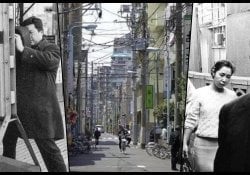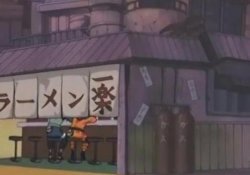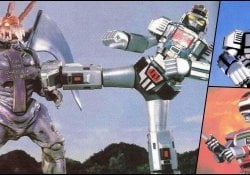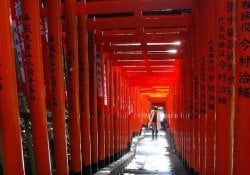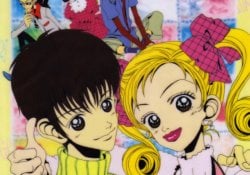Yakudoshi [厄年] literally means critical or calamitous years. It is a custom of the Japanese to believe that a certain age is considered bad, full of bad luck and they are more susceptible to misfortunes or diseases.
In Buddhism, calamitous periods in life are likened to the knots of a bamboo. That hard knot in the bamboo is necessary for its continuity and maintaining its strength. Likewise, calamitous years are necessary for us to gain experiences.
These ages are idealized according to Chinese yin/yang and can also be considered an age of transformation and maturity.
List of calamitous years - bad ages
The unlucky years can be seen in the table below, and may vary by gender and region. The calamitous years are divided into Maetaku, Honyaku and Atoyaku which refers to before, during and after the critical age.
Honyaku literally means: Great Calamity. Many people also believe that the year before Maeyaku and the year after Yakudoshi (Atoyaku) are also calamitous and take great care.
For men [男性] his calamitous years are:
| Maeyaku [前厄] | honyaku [本厄] | Atoyaku [後厄] |
| 24歳 | 25歳 | 26歳 |
| 41歳 | 42歳 | 43歳 |
| 60歳 | 61歳 | 62歳 |
For women [女性] their calamitous years are:
| Maeyaku [前厄] | honyaku [本厄] | Atoyaku [後厄] |
| 18歳 | 19歳 | 20歳 |
| 32歳 | 33歳 | 34歳 |
| 36歳 | 37歳 | 38歳 |
Why do the Japanese believe in yakudoshi?
Why do the Japanese believe this? Well, you know they're full of superstitions. But his explanations for each age are as follows:
- 42 [四十二] can be pronounced “shi-ni” [四二], which has the same phoneme as the word “death” 死に.
- The number 33 pronounced as “Sanzan” means “terrible”, or “disastrous”;
- Some supporters of this theory, explain that 25 is the end of puberty for men and 19 for women, and say that these years are suffered full of challenges.
- Likewise 61 and 37 is the end of adulthood for them. (strange because Japanese women aged 37 have the face of 20);
Well, who are we to question Japanese beliefs? It is rather strange to believe in such superstitions. But to strengthen such beliefs, several Coincidences happen, in addition, the person's belief and psychological make him believe that he is having bad days.
Read also: Japanese Superstitions - Bad Luck and Superstitions in Japan
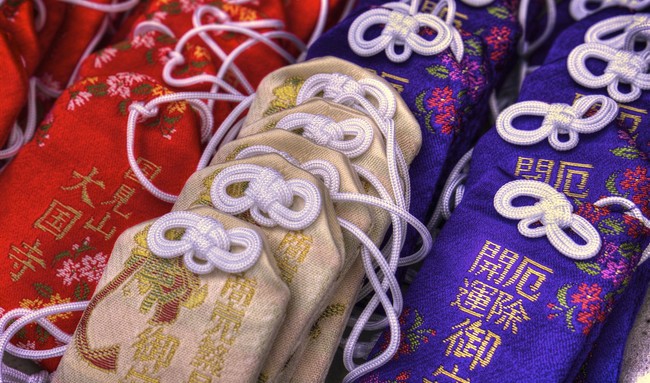
How do the Japanese avoid these years?
Many Japanese do many things to not be unlucky at this age. Things like:
- Family and friends throw a party to celebrate the unlucky boy's birthday, and he reciprocates the following year;
- Some often visit shrines such as: Chiba Shrine, Nishiarai Daishi, Aoyagi Daishi, Myohoji and others;
- Some often wear amulets and objects to attract luck at this age;
- In ancient times, people practiced a rite by drinking Sake under a plum tree in temples to ward off calamities. Today, however, they pray with Sake contained in a calabash;
- Those who went to the temples received an amulet called Ofuda to be placed in their home in order to protect it. When the year of the Yakudoshi passed, they returned them, thanking them that nothing bad had happened;
Yakudoshi was not just considered a superstition, but a belief that was part of the daily life of the Japanese. But as the situation goes, almost every year is calamitous.
The article is still halfway through, but we recommend also reading:
Yakubarai - ceremony to ward off suffering
The Yakubarai Buddhist ceremony is performed to ward off suffering. The ceremony can be performed individually or together with other ceremonies such as Kannon Hõyo.
Yakubarai is held in the year of Maeyaku, preferably in the first months of the year, and then in the year of Atoyaku, as thanks for closing the critical period. It is common to perform the ceremony with friends and family at a party.
In keeping with such a tradition, it is believed to be a good omen for the men in Honyaku to visit temples and perform ceremonies to ask for protection and celebrate the birthday with a special feast.
It is not known for sure how these superstitions arose. What do you think? If you liked the article, leave your comments and share it with your friends.


